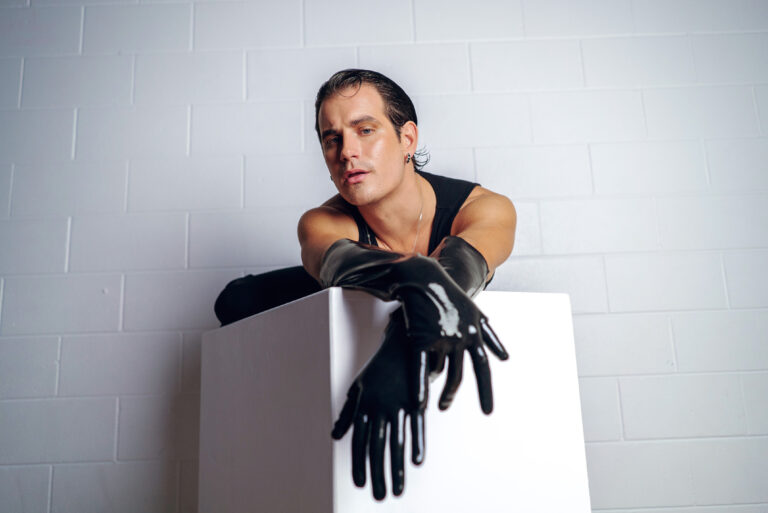
When she was a kid, Liz Lerman thought she was going to be a ballerina. But, as the renowned choreographer and radical visionary said in her acceptance speech upon receiving the Jacob’s Pillow Dance Award last summer, “Then the world happened.” After early training in Graham technique and, yes, ballet, Lerman had a crisis of faith around age 14. She was witnessing the rise of the civil rights movement, but she didn’t know it was possible to deal with such subject matter in dance. And so began a long exploration. From her disillusionment emerged a radical philosophy of inclusion that would underpin her art-making for the next 50 years.
Over the course of her career, Lerman, who turns 70 this month, has taught and made and built dances and experiences in studios, nursing homes, shipyards and laboratories. She has worked in residence at prestigious institutions, earned fellowships and grants from major funders, including a MacArthur “Genius Grant” Fellowship, and collaborated to build Dance Exchange, the company she founded in 1976. Her work has helped communities around the country and the world to excavate new insights into who they are and why they matter. Lerman has perpetually questioned who gets to dance, as well as what the dance is about, where it is happening and why it matters.
Now in her second year as Institute Professor at Arizona State University, Lerman remains as curious, engaged and ready for new work as ever. In 2011, she left Dance Exchange and published a book, Hiking the Horizontal: Field Notes from a Choreographer, about her inclusive nonhierarchical approach to making art.
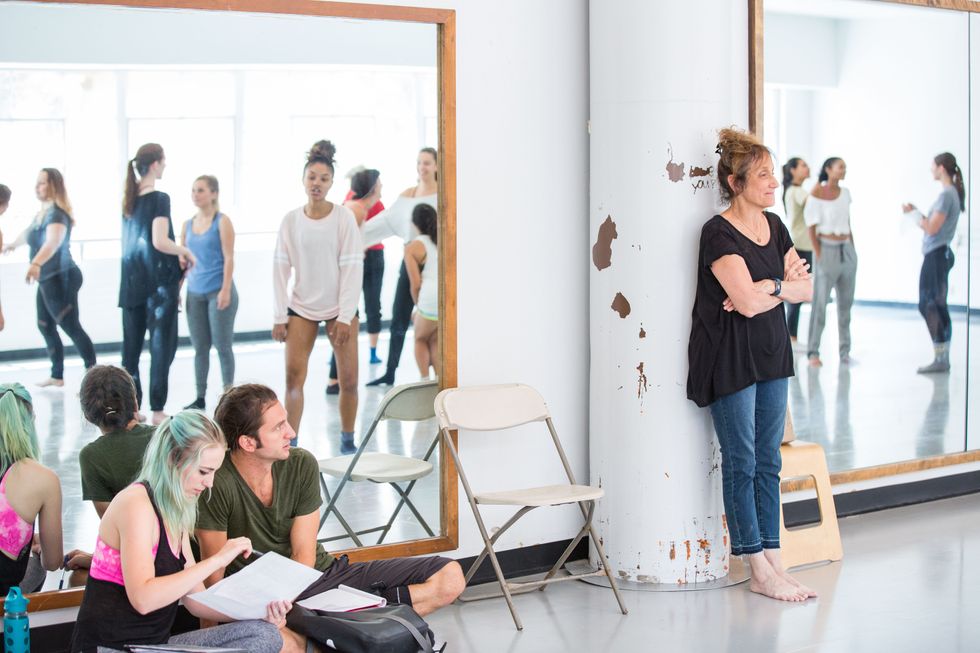
“I may be provocative here,” says Lerman about her teaching approach. Photo by Deanna Dent, courtesy of Lerman.
Who Gets to Dance?
Despite her early interest in ballet, by the time Lerman got to college, she had become a modern dancer. After college she moved to New York and trained further. She also made a living briefly as a go-go dancer before deciding that the New York scene was not for her. She relocated to Washington, DC, with a fellowship from George Washington University (where she completed her MA in dance) and began teaching at the studio that eventually became Dance Place, which at the time was Cunningham-based. But her interests ranged far beyond codified technique, and she found herself at odds with the purist approach of the studio.
It was about that time, in 1975, that Lerman began the creative project that would define her career. Though having presented only one formal work on the concert stage (New York City Winter, based on her go-go gig), she decided to make a work about her family’s experience of her mother’s death. She wanted older people to be in the dance, so she found a retirement home where, for five dollars a week, she taught dance workshops to the elderly residents. Her experiences in that “weird and wondrous laboratory,” she writes in Hiking, brought up questions about everything she had learned about dance, training and performance. Here was the ground from which Dance Exchange sprang, starting with the fundamental question, “Who gets to dance?”
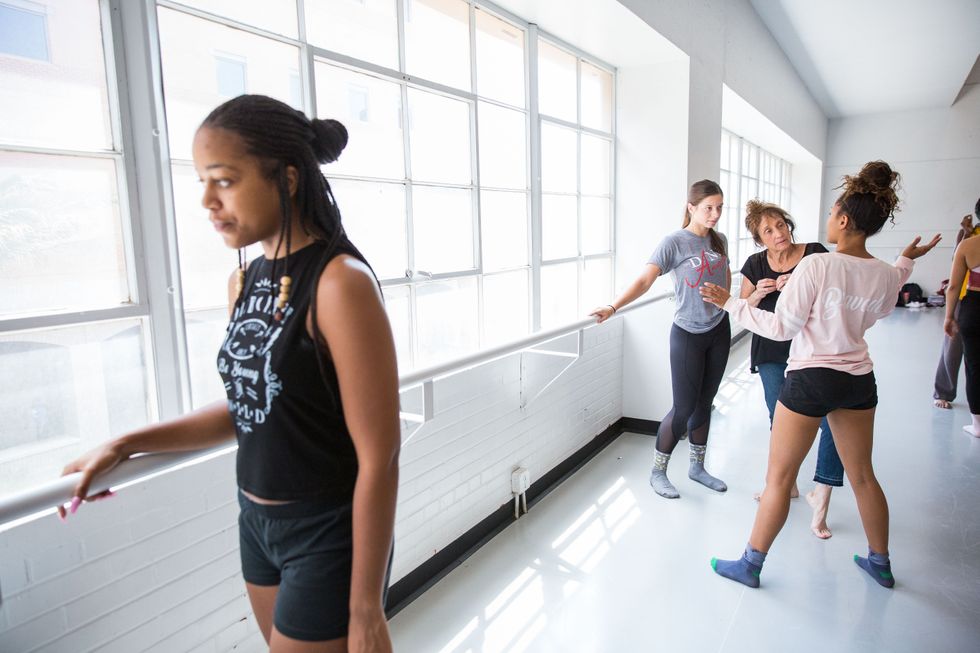
Third-year dance students at Arizona State University explore choreography skills with Lerman in Creative Practices class. Photo by Deanna Dent, courtesy of Lerman.
Dance Exchange
Energized by her work in the community, Lerman decided to start a school and a company. “The idea was that it would be a place where the faculty would all be different, and there’d be lots of exchange of what people knew,” she says. She wanted her community work to be a focus, and so “a dual commitment to concert and community” emerged. Also critical was, Lerman says, “the idea of a humane institution where everybody gets to grow, not just the person in charge.”
Dance Exchange made work in wildly diverse communities, collaborating with physicists, bureaucrats and construction workers. The company brought dance into places with no previous context for it, such as the Portsmouth Naval Shipyard in Maine, and The Large Hadron Collider at CERN, in Switzerland. Many people who may never have seen a dance performance got to perform in Dance Exchange projects. Over time, as the work with elderly populations continued, the company incorporated older dancers in its core group.
As a teacher, Lerman grew increasingly interested in sharing the teaching and creative tools she was developing through her community work. “I’m tool-obsessed,” she says. The Dance Exchange Toolbox (freely available online), guides users on “a search to discover questions and structures that would help inventive people find physical answers and stories inside themselves.” She also developed the Critical Response Process (CRP), a way to facilitate development of works in progress through dialogue between artists, peers and audience. CRP has been widely embraced within and beyond the field of dance, reaching educators, administrators, scientists and corporate leaders.
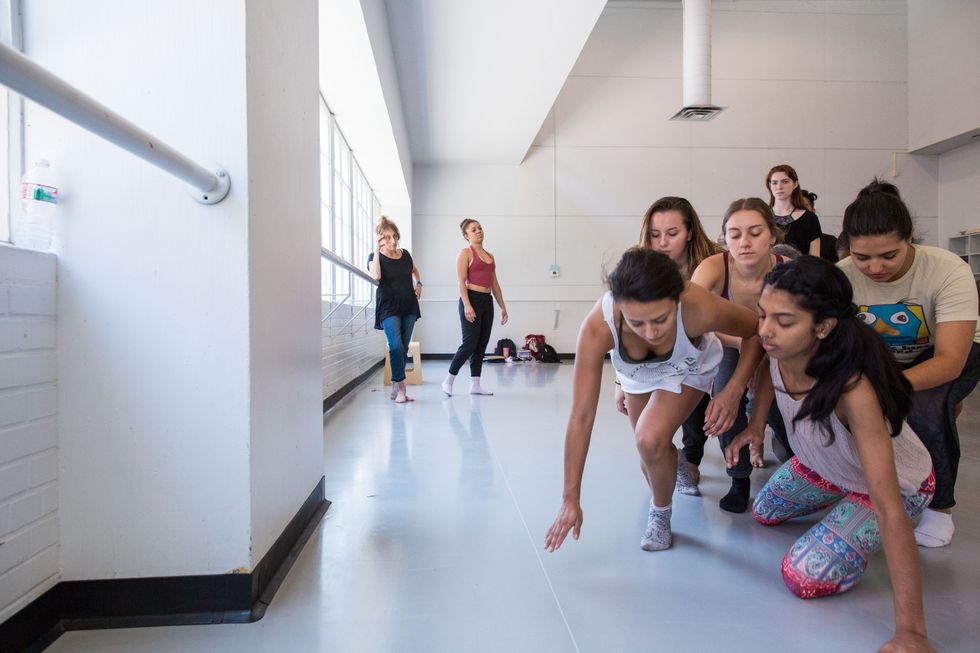
As part of Lerman’s Creative Practices, ASU dance students participate in various community projects. Photo by Deanna Dent, courtesy of Lerman.
Shape-Shifter
Lerman’s decision to leave Dance Exchange evolved gradually. “I loved my years in the Dance Exchange. It was like a laboratory,” Lerman says. “I also changed my relationship to it, and to what an artistic director does. I shape-shifted so much during those years, and there got to be a time when I was shape-shifting myself out of existence. That is to say, the organization needed a real artistic director, and I wasn’t willing to be that person. If you’re an artistic director, you have to pay attention to the whole. You have to pay attention to the future. You have to pay attention to the budget. You have to pay attention to the individual growth of each person around you. And I think I had learned what I could learn from that.”
The company has since shifted its structure, and Cassie Meador, a DE member since 2002, now serves as executive artistic director. Meador credits Lerman with helping her to understand that a life in dance does not mean giving up engagement with the world. “Liz has such a strong belief in the capacity for people to effect change in their lives,” says Meador. “Not creating that change alone, but that art-making is a powerful way of bringing communities together, and also building a community that makes that potential for change possible.”
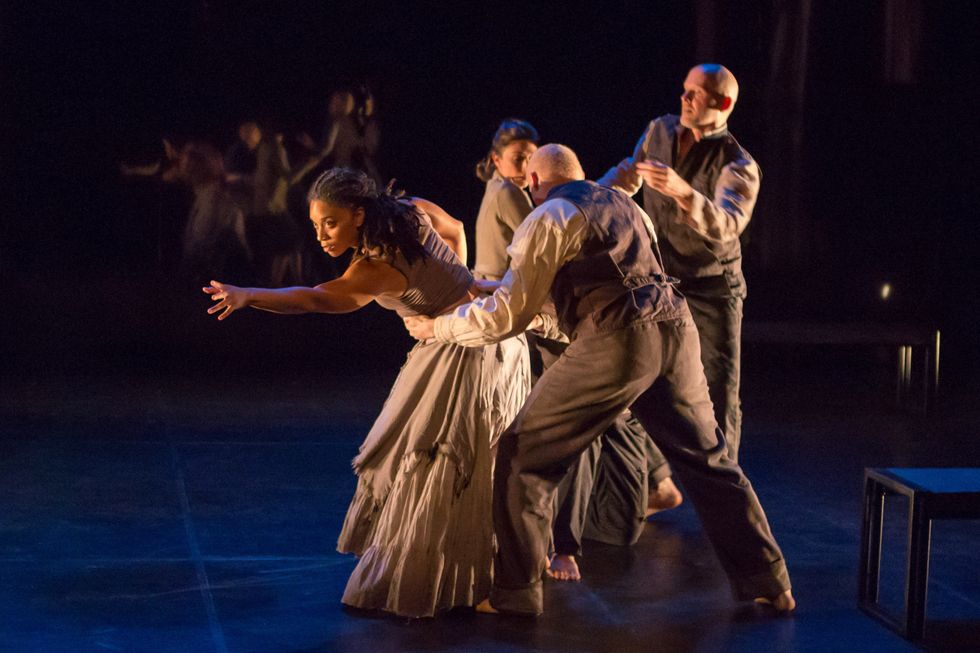
Samantha Speis and Ted Johnson perform in Lerman’s Healing Wars. Photo by Teresa Wood, courtesy of Lerman.
After Dance Exchange
Working outside the company, says Lerman, was shocking at first. “I made a lot of mistakes, because I didn’t realize things like how much vetting of ideas you do in an organization.” She missed having a group of people to provide feedback. But an initial residency at Harvard University helped stabilize her, and from there she moved into a several-year-long period of creating Healing Wars in collaboration with dancers, sound designers, media designers and the actor Bill Pullman. The work premiered at DC’s Arena Stage in 2014 and investigated the impact of war on medicine, using the lenses of the American Civil War and the Iraq War.
At the end of this project, which she recalls with love, a new opportunity emerged. Steven Tepper, the dean of the Herberger Institute for Design and the Arts at Arizona State University, called to offer Lerman a job.
“It was a real surprise,” she says. “I had no intention of being full-time in a university. When Steven called me out of the blue and said, ‘Do you want to come here?’ I said, ‘Really, I don’t know.’ But I would come for a visit.”
She visited, and then she stayed, becoming in 2016 the first Institute Professor, which means she is part of the dance program, teaches within it and is also expected to work across disciplines, across the campus and within the community. In the job, she says, “a lot of the things that I’ve been interested in my whole life were put in front of me on a plate,” such as inclusivity, community, radical pedagogy and the sharing of tools via teaching. Not only that, she says, “I’m a person who’s raised my own money my whole life. I thought, ‘Wow, I can do all this, and someone else will pay me to do it.’ I couldn’t believe it.”
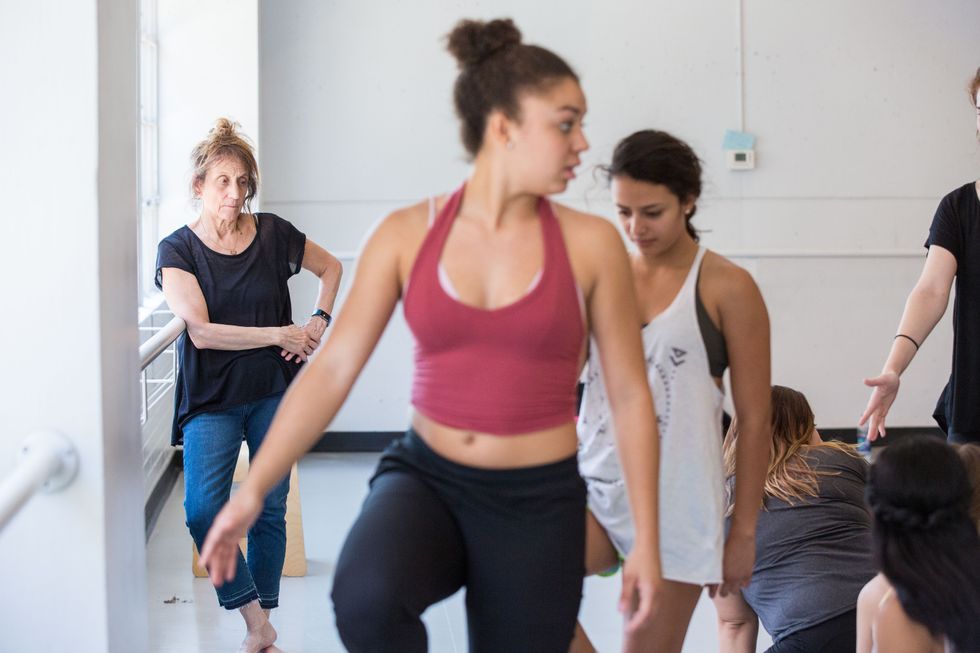
Photo by Deanna Dent, courtesy of Lerman.
A Fitting Environment
At ASU, Lerman is excited to share her teaching and creative strategies more broadly through, for example, an online course called The Atlas of Creative Tools. She also plans to further develop her Critical Response Process feedback system.
Lerman’s approach to teaching and making work within the university differs from many traditional models. For one thing, as a choreographer, she has never felt at home with creating work on students. “I may be provocative here,” she says, since faculty choreographers creating work on students is both common practice and accepted wisdom as a mode of teaching, of giving students insight into the creative process of professionals. Even as a student, Lerman was uncomfortable with the practice because it had a tendency to privilege the teacher’s creative process over the students’ learning.
“As a choreographer, I always feel competing loyalties. Am I working on the goals of the person who’s in front of me? Am I working on the goals as a teacher? Am I working on my own creative edge? Am I working on the edge that the field is interested in, or I feel like I want to push? When I’m teaching, I feel like I must teach, that the answer to those competing loyalties is to support the student. As a choreographer, I need to be pushed by the people in front of me, and I don’t think a student can push me.”
So she’s creating work with dancers outside of ASU, including some recent graduates. Her current project was inspired in part by an exhibit in Scotland called Witches and Wicked Bodies. “Every culture has its witches,” she says. “I’m interested in the power and mystery of knowledge. I’m interested in the colonization of knowledge. Right now, [the piece] is a little all over the place, but it’ll settle down.”
Having the freedom to create and innovate with broad and stable institutional support offers an artist of Lerman’s stature unprecedented opportunities to embody and share her ideas on a large scale. It’s a fitting environment for a MacArthur genius to pursue her work.
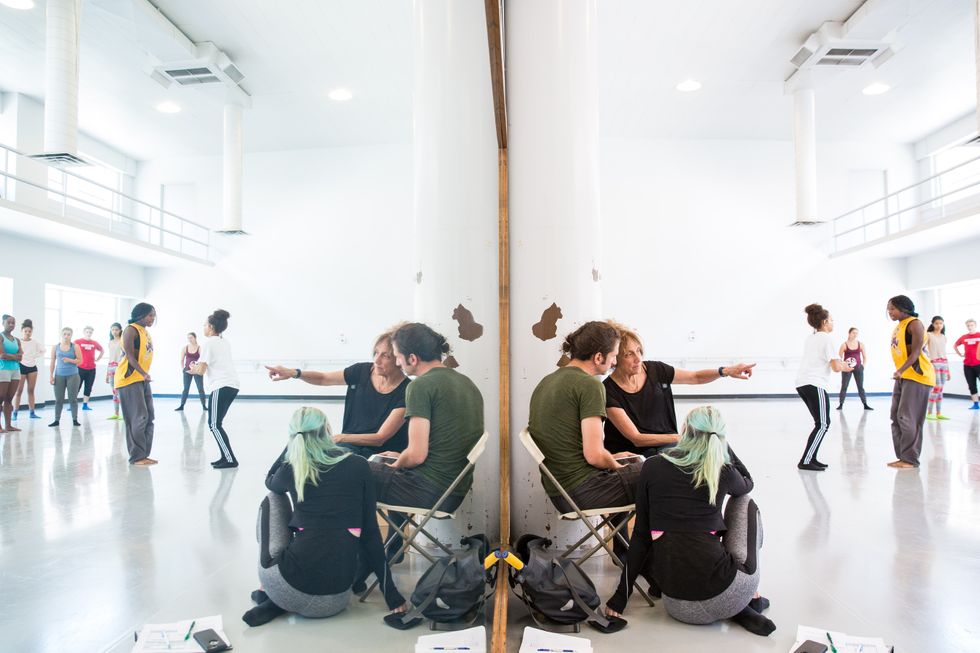
Photo by Deanna Dent, courtesy of Lerman.
Beyond “Dancing With Old People”
The accolades she has received of late, and over the course of her career, testify to Lerman’s stature in a field that was once dubious about the artistic impact of community-engaged work. But the radical nature of her work transcends conventional modes of recognition. She reaches people.
Maura Keefe, contemporary dance historian and scholar-in-residence at Jacob’s Pillow Dance Festival, notes the importance of recognition “not just for her past accomplishments but for her continuing new ideas. For example, her being brought in to ASU to be a catalyst for action is really exciting, since oftentimes when women are at this age, the assumption is that they have nothing left to offer.” Keefe goes on to say, “One of the things that I think is most important about her contribution is that she has long been able to articulate the value of dance in communities of all different kinds. She doesn’t just do it; she knows how to talk about it so that it makes sense to people who don’t necessarily already value dance.”
The success of Lerman’s inclusive philosophy lives in the practices and understanding of the thousands of people who have experienced her rigorous, open and deeply compassionate mind, whether as performers, students, collaborators or audience. Meador celebrates the fact that Lerman’s work—her dances, her tools, her questions—supports people “in showing up to the conditions and realities of our times. And why would you limit the vast potential in those capacities to only a small group of people, when they’re the very tools and capacities that we need to keep being awake and responsive to our world?”



